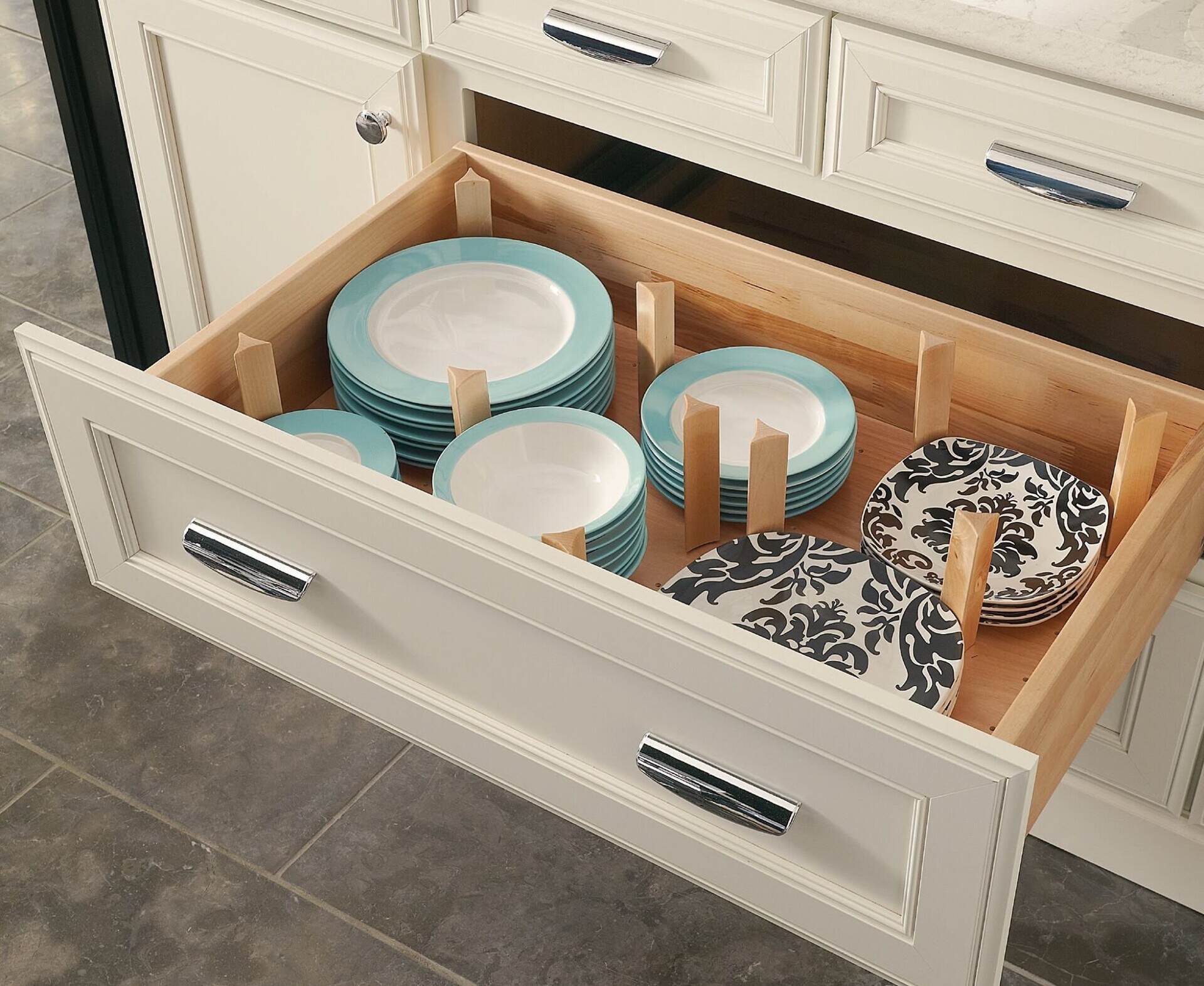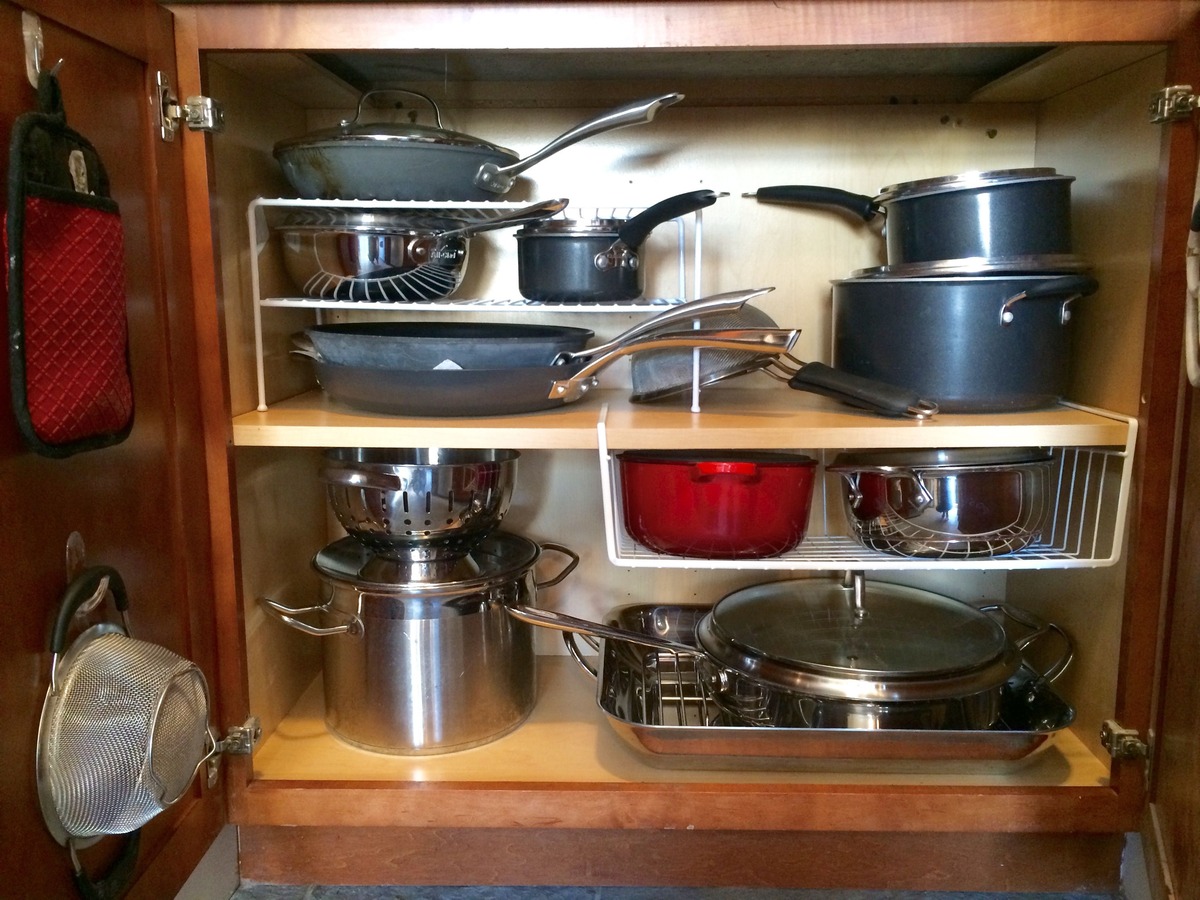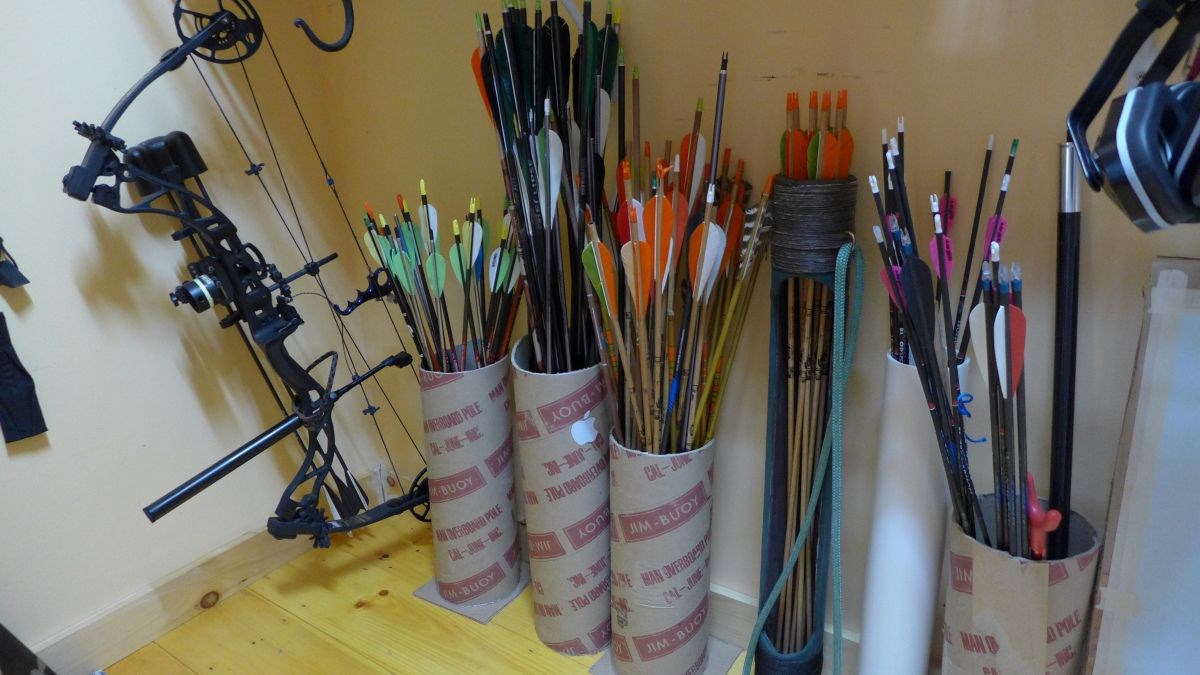

Articles
How To Store Journals
Modified: December 7, 2023
Learn the best practices for storing articles and journals to maintain their quality and longevity. Discover effective techniques and tips for proper storage.
(Many of the links in this article redirect to a specific reviewed product. Your purchase of these products through affiliate links helps to generate commission for Storables.com, at no extra cost. Learn more)
Introduction
Welcome to the fascinating world of journaling! Whether you use it as a creative outlet, a tool for self-reflection, or a way to record your daily experiences, keeping journals is a valuable practice. Over time, these journals can accumulate and become a treasure trove of memories and insights.
But with the growth of your journal collection, the need for proper storage and organization becomes essential. In this article, we’ll explore how to store journals effectively, ensuring their longevity and easy accessibility. From choosing the right storage space to creating digital backups, we’ll cover all the essential steps to keep your journals safe and organized.
So, let’s dive in and discover the best practices for storing your cherished journals!
Key Takeaways:
- Preserve your cherished journals by choosing the right storage space, organizing them by topic, and protecting them from physical damage. Consider creating digital backups for added security and accessibility.
- Ensure the longevity of your journals by investing in archival-quality materials, implementing a consistent labeling and tracking system, and creating digital backups. These practices will safeguard your memories for generations to come.
Read more: How To Store Old Journals
Choosing the Right Storage Space
When it comes to storing your journals, selecting the right storage space is crucial to ensure their preservation. Here are a few factors to consider:
- Climate control: Opt for a storage area that maintains a stable temperature and humidity level. Extreme temperatures and moisture can damage the pages and cause mold growth. Avoid areas prone to temperature fluctuations, such as attics or basements.
- Avoid direct sunlight: Sunlight can fade the ink and deteriorate the paper. Choose a location away from direct sunlight or use UV-resistant covers on your journals to protect them from harmful rays.
- Dust-free environment: Dust can accumulate and damage the pages over time. Store your journals in sealed containers, cabinets, or bookshelves to keep them dust-free. Avoid storing them in open areas or on exposed shelves.
- Consider security: If your journals hold sensitive or personal information, consider a storage space with added security measures such as a lockable cabinet or a private room.
Keeping these factors in mind, assess your available options. A dedicated shelf, a storage box, or a filing cabinet can be excellent choices for storing your journals safely and conveniently. Choose a space that best fits your needs while ensuring the longevity of your cherished memories.
Organizing Journals by Topic
As your journal collection grows, organizing them by topic can make it easier to find specific entries and revisit specific themes. Here are some tips to help you organize your journals effectively:
- Create categories: Start by creating overarching categories that represent the different topics or themes in your journals. For example, you may have categories such as personal growth, travel, relationships, or creative writing.
- Label your journals: Assign each journal to a specific category by labeling them accordingly. You can use color-coded labels, stickers, or simply write the category name on the cover or spine.
- Arrange them chronologically: Within each category, arrange the journals in chronological order. This will help you track your progress within each topic and easily find specific journal entries.
- Create an index or table of contents: For more extensive collections, consider creating an index or table of contents. This will serve as a quick reference guide, allowing you to locate specific entries without flipping through multiple journals.
- Consider digital organization: If you prefer digital journaling or want a backup of your physical journals, consider using journaling apps or software that allows you to organize entries by topic, date, or keyword tags.
Remember, the goal of organizing your journals by topic is to make it easier for you to navigate through your collection and find specific entries whenever you need them. It’s a personalized system that reflects your unique interests and preferences.
By organizing your journals by topic, you can embark on a journey through different aspects of your life, easily revisit your thoughts and experiences, and gain valuable insights from your past self.
Protecting Journals from Damage
Preserving the physical condition of your journals is essential to maintain their longevity and sentimental value. Here are some tips to protect your journals from damage:
- Handle with care: When handling your journals, make sure your hands are clean and dry. Avoid using sharp or pointed objects that could accidentally tear or damage the pages.
- Use acid-free materials: Acidic materials can deteriorate the paper over time. Opt for acid-free archival-quality paper or folders when adding additional notes, artwork, or ephemera to your journals.
- Protective covers: Consider using protective covers such as acid-free plastic sleeves or transparent folders to shield your journals from dust, moisture, and accidental spills.
- Avoid adhesive tape: Using regular adhesive tape can damage the pages and leave behind residue. If you need to attach something to your journal, opt for acid-free adhesive or archival photo corners.
- Maintain a clean storage environment: Regularly clean the storage area to prevent dust and dirt from accumulating on your journals. Use a soft, dry cloth to gently wipe the covers and spines.
- Handle leather-bound journals carefully: If you have leather-bound journals, be extra cautious with them. Avoid exposing them to extreme temperatures and moisture, as leather is prone to damage under such conditions.
- Store upright or flat: It’s best to store your journals upright or flat to prevent them from bending or warping over time. Avoid stacking them too high, as the weight can cause damage to the lower journals.
- Regularly inspect for pests: Insects and pests can cause irreparable damage to your journals. Regularly check your storage area for any signs of infestation and take necessary measures to eliminate the pests.
By following these protective measures, you can safeguard your journals from physical damage and ensure their preservation for years to come. Your journals will not only hold your memories but also retain their original beauty and charm.
Store journals in a cool, dry place away from direct sunlight to prevent fading and deterioration. Consider using acid-free boxes or folders to protect them from damage.
Preserving Journals for Long-Term Storage
If you have journals that hold significant personal or historical value, preserving them for long-term storage is crucial. Here are some important steps to help you safeguard your journals for generations to come:
- Choose archival-quality materials: Opt for acid-free, lignin-free archival-quality boxes, folders, and paper to store your journals. These materials are specifically designed to prevent deterioration and discoloration over time.
- Invest in acid-free tissue paper: For added protection, consider interleaving your journals with acid-free tissue paper to prevent pages from sticking together and to absorb any excess moisture.
- Store in acid-free boxes: Place your journals in acid-free, lignin-free archival boxes to shield them from light, dust, and other environmental factors that could potentially damage the pages.
- Avoid plastic or PVC containers: Plastic containers can trap moisture and lead to mold growth. Instead, opt for acid-free cardboard or metal boxes that allow for proper air circulation.
- Control the storage environment: Maintain a stable storage environment with consistent temperature and humidity levels. Extreme fluctuations in temperature and humidity can cause irreversible damage to your journals.
- Keep away from basements and attics: Basements and attics are prone to humidity and temperature fluctuations, making them unsuitable for long-term storage. Choose a cool, dry, and dark area of your home or consider professional storage options.
- Regularly inspect and reorganize: Periodically check on your stored journals to ensure they remain in good condition. Take the opportunity to reorganize and update the storage system if needed.
- Consider digitizing: If you want to preserve your journals in a digital format, consider scanning or photographing their pages. This will give you a backup copy and allow for easier sharing and accessibility.
By following these preservation techniques and storing your journals in the appropriate conditions, you can ensure that they remain intact and well-preserved for future generations to enjoy. Your journals will serve as a timeless testament to your life’s experiences and reflections.
Read more: How To Organize A Journal
Labelling and Tracking Journals
Labelling and tracking your journals is essential for easy identification and organization. Here are some tips to effectively label and track your journals:
- Create a consistent labeling system: Establish a labeling system that works for you. Consider using a combination of categories, numbers, or dates to label your journals. This will help you quickly locate specific journals when needed.
- Use legible and durable labels: Make sure your labels are legible and will last over time. Avoid using adhesive labels directly on the journal covers, as they can leave behind residue or damage the surface. Instead, consider using removable labels or labelling the spine of the journal.
- Maintain a journal inventory: Keep a digital or physical journal inventory where you can track the details of each journal, including the title, category, date range, and any significant contents or themes. This will serve as a quick reference guide and help you keep track of your collection.
- Update your inventory regularly: As you add new journals to your collection, make sure to update your inventory accordingly. This will ensure that your tracking system remains accurate and up-to-date.
- Consider using barcode or QR code labels: For larger collections, consider using barcode or QR code labels that can be scanned to retrieve journal information. This can streamline the tracking process and make it easier to manage your collection.
- Group journals by category: Keep journals of the same category together, whether on a designated shelf or in a labeled box. This will make it easier to locate specific topics or themes when you need to refer back to them.
- Make a note of borrowed or loaned journals: If you are lending your journals to others or borrowing journals from friends or family, keep track of these exchanges in your inventory. This will help ensure that you remember who has your journals or which journals you’ve borrowed.
By implementing an effective labeling and tracking system, you can easily locate and keep track of your journals. You’ll be able to navigate through your collection with ease and find the right journal for your needs.
Creating a Digital Backup of Journals
In this digital age, creating a digital backup of your journals is a smart way to ensure their long-term preservation and accessibility. Here are some steps to help you create a digital backup of your journals:
- Choose a digital journaling platform: Select a digital journaling platform or app that suits your needs and preferences. Look for features such as encryption, cloud storage options, easy synchronization across devices, and the ability to export your journals.
- Scan or photograph your journals: Use a scanner or a high-quality camera to create digital copies of your journal pages. Ensure that the images are clear and legible. If your journals contain artwork or ephemera, capture those as well to maintain the authenticity of your entries.
- Organize your digital files: Create a dedicated folder on your computer or cloud storage service to store your digital journal files. Organize them in a logical and consistent manner, such as by date or category, to make it easy to locate specific entries.
- Create backups: Regularly back up your digital journal files to multiple locations, such as external hard drives, USB drives, or cloud storage services. This will ensure that your digital backups are protected in case of computer crashes or data loss.
- Encrypt sensitive entries: If your journals contain sensitive or private information, consider encrypting those specific entries or utilizing password-protected features offered by your digital journaling platform. This will add an extra layer of security to your digital backups.
- Sync across devices: If your digital journaling platform allows synchronization across multiple devices, take advantage of this feature. It will enable you to access your journals from different devices and ensure that your digital backups are always up to date.
- Periodically test your backups: It’s important to periodically test your digital backups to ensure their integrity and readability. Open and review some of the backed-up files to make sure they are accessible and display correctly.
Creating a digital backup of your journals provides an additional layer of protection and convenience. You can easily access and search through your journal entries, and the digital copies act as a safeguard against physical damage or loss.
Remember, while digital backups are useful, it’s equally important to maintain the physical journals themselves, as they hold a unique sentiment and connection to your experiences.
Conclusion
Properly storing and organizing your journals is crucial for preserving their sentimental value and ensuring their longevity. By following the steps outlined in this article, you can create a system that protects your journals from damage, allows for easy access to specific entries, and even provides a digital backup for added security.
Start by choosing the right storage space, ensuring it is climate-controlled and free from direct sunlight and dust. Organize your journals by topic, using a consistent labeling system and arranging them chronologically within each category. Take precautions to protect your journals from physical damage, such as handling them with care, using acid-free materials, and storing them in protective covers.
For long-term preservation, invest in archival-quality materials, store your journals in acid-free boxes, and maintain a clean and controlled storage environment. Label and track your journals using a system that works for you, whether it’s through physical labels, digital inventory, or barcode scanning.
Consider creating a digital backup of your journals by scanning or photographing the pages, organizing the digital files, and regularly backing them up to secure locations. This digital backup will provide an extra layer of protection and accessibility to your journal entries.
In conclusion, by implementing these storage and organizational techniques, you can ensure that your journals remain intact, protected, and easily accessible for years to come. Your cherished memories, insights, and reflections will be preserved, allowing you to revisit them whenever you desire, and leaving a lasting legacy for future generations.
Frequently Asked Questions about How To Store Journals
Was this page helpful?
At Storables.com, we guarantee accurate and reliable information. Our content, validated by Expert Board Contributors, is crafted following stringent Editorial Policies. We're committed to providing you with well-researched, expert-backed insights for all your informational needs.















0 thoughts on “How To Store Journals”